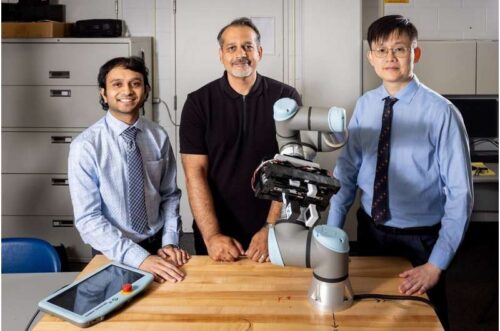The fabric sensor helps robots feel touch. It lets them hold things, sense slipping, and adjust grip to work safely and handle objects better.

Robots may soon gain a human-like sense of touch, thanks to a new electronic textile (E-textile) developed at the University at Buffalo. The fabric mimics how human nerves detect both pressure and slip, enabling robots to grip objects more naturally. This could improve tasks like robotic surgery, product assembly, packaging, and prosthetic control—areas where fine touch is critical.
Currently, robots often drop objects or grip them too tightly, causing damage. While researchers have added cameras and other tools to improve this, a simple and affordable solution has remained elusive. The newly developed sensor offers a potential answer. It is flexible, highly sensitive, and capable of detecting subtle movements and pressure, much like human skin.
Researchers tested the sensor by integrating it into 3D-printed robotic fingers connected to a soft robotic gripper. With the sensor in place, the gripper was able to detect slippage and automatically adjust its grip force and compliance. For example, when a copper weight was pulled from the fingers, the gripper instantly responded by tightening its hold. This enabled in-hand manipulation tasks that were previously difficult for robots.
The sensor operates using the tribovoltaic effect, a phenomenon where slight motion between materials generates direct current (DC) electricity through friction. This allows the sensor to detect motion with high sensitivity and fast response.
In terms of performance, the sensor showed response times ranging from 0.76 milliseconds to 38 milliseconds. This closely aligns with human touch receptor speeds, which typically range from 1 to 50 milliseconds. The sensor’s signal also becomes stronger with more intense motion or slippage, making it ideal for feedback-based control systems.
The research team plans to continue testing the sensor and incorporate reinforcement learning techniques to improve the robotic hand’s dexterity and adaptability in dynamic environments.

